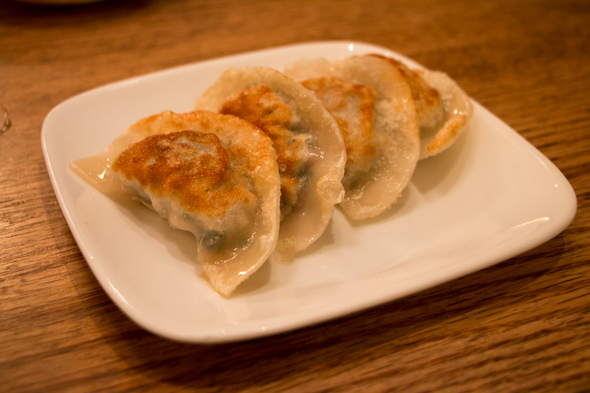The Universally Delicious Dumpling
By Ellen Park
When I was a kid, I adhered to a strict diet made up almost entirely of Peanut Butter Cap’n Crunch cereal. Needless to say, my dietary regimen didn’t allow for much Korean food, much to my parents’ dismay. They were first generation Korean immigrants who had lived through the Korean War, nationwide food shortages, and traveled thousands of miles to build a home in the United States only to find their daughter subsist on a strange concoction made up of sugar, dextrose, hydrogenated vegetable oil and BHT preservative. I’m sure peanuts were in there somewhere too.
In the suburbs of Cleveland, Ohio a nightly battle would ensue at approximately 6 p.m. Eastern Time. Dinner time was a standoff at the table between my parents and myself. But the one thing that would go down without a fight were dumplings, because who doesn’t love dumplings?
Based on very extensive and completely anecdotal research, I’ve found that one common thread uniting humanity across the globe is that people are very keen on dumplings, including exceptionally picky six year olds.
In Japan they’re called gyoza. In Nepal they’re known as momos, and in Afghanistan and Kazakhstan they’re often called manti. China has a plethora of different kinds of dumplings including shumai, jiaozi and of course xiao long bao, also known as soup dumplings, the eating of which can take some finesse. Some say there is a right way and a very wrong way to eat xiao long bao. Either way, I am very happy to eat all their dumplings while they are distracted by this very important discussion.
Whatever you call them or however they’re eaten, they’re proof that across cultures and continents, somebody, somewhere thought it was a good idea to take some filling and wrap it in dough. And that somebody was a genius.
Dumplings are an ideal food. They’re highly transportable, self-contained, bite-size and can be adapted for nearly any taste bud. For the dedicated dumpling connoisseur, you can have a different kind of dumpling for nearly every day of the month.
In Korean, dumplings are known as “mandu” and while I was growing up, making them was one of my top food-related activities (after eating them of course).
My mother and her friends would get together to make them before the New Year, birthdays or other festivities, and my assigned task was to seal the dumplings by pressing the edges together. We would take a spoonful of the filling and place it into a circular wrapper, brush the edges with beaten egg yolk and then fold over the dough to make a half-crescent shape. Then they would be taken away in batches to be steamed (jin mandu), boiled (mul mandu) or fried (gun mandu).
More often than not, the mandu I had put together were deemed “not presentable” for guests due to their highly asymmetrical constructions. But secretly I didn’t mind as it just meant more mandu for me. Plus, I always thought the ones that I had made were tastier (albeit slightly more misshapen).
Now, making homemade mandu is on my perennial list of “things to do” someday, along with doing more yoga, jogging six miles a day, meditating, and learning how to play the saxophone.
In the meantime, it’s quicker and easier to buy them pre-made and frozen from an Asian grocery store, like Hanahreum on 32nd Street in New York’s Koreatown. They’re straight from the freezer, but somehow they still offer a taste of comfort and of home.


Your Comments